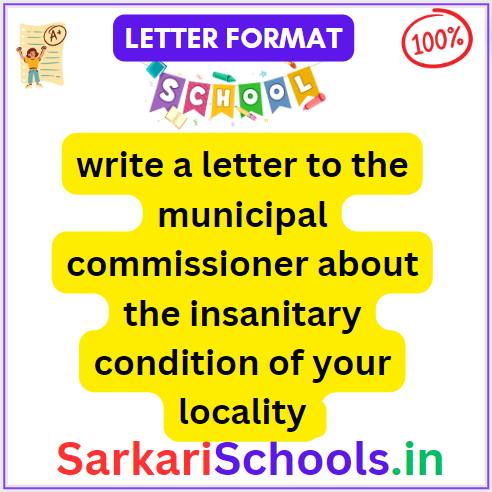Discover the essence of formal letters in English – their definition, varied types,Formal Letter Format in English and practical examples. From business and cover letters to complaint and job application letters, explore the structured format and nuanced styles. Elevate your professional communication with this comprehensive guide on crafting formal letters, complete with illustrative examples for a clear understanding.
Table of Contents

Formal Letter Format in English ,Definition, Types With Example
Formal Letter Definition
A formal letter is a written communication sent in a professional or business context. It follows a specific format and is used for official purposes such as making inquiries, submitting complaints, applying for jobs, or conveying information in a professional setting. Formal letters are characterized by a structured layout, adherence to conventions, and a serious, respectful tone.
Types of Formal Letters:
- Business Letter:
- Purpose: Used for formal communication between companies, organizations, or individuals in a business context.
- Example: Writing a letter to a client, applying for a business partnership, or submitting a proposal.
- Cover Letter:
- Purpose: Accompanies a resume when applying for a job, providing additional information about the candidate’s qualifications and interest in the position.
- Example: Applying for a job and submitting a cover letter along with the resume.
- Job Application Letter:
- Purpose: A formal letter used to apply for a specific job.
- Example: Sending a letter to a company expressing interest in a job opening and providing relevant qualifications.
- Complaint Letter:
- Purpose: Expressing dissatisfaction or raising an issue with a product, service, or situation.
- Example: Writing to a company to complain about a faulty product or poor customer service.
- Inquiry Letter:
- Purpose: Seeking information or clarification on a specific matter.
- Example: Writing to a school to inquire about admission procedures or contacting a company for product details.
- Resignation Letter:
- Purpose: Formal notification of an employee’s intention to resign from a job.
- Example: Submitting a resignation letter to an employer, providing notice and reasons for leaving.
- Reference Letter:
- Purpose: Providing a recommendation or reference for an individual, often for employment or academic purposes.
- Example: Writing a letter endorsing a former employee or colleague for a new job opportunity.
- Official Invitation Letter:
- Purpose: Inviting someone to attend a formal event or occasion.
- Example: Inviting guests to a business conference or a formal ceremony.
- Acknowledgment Letter:
- Purpose: Confirming receipt of documents, payment, or other items.
- Example: Sending a letter to acknowledge the receipt of a job application or payment.
- Letter of Recommendation:
- Purpose: Providing a detailed recommendation for an individual based on their skills, character, and achievements.
- Example: Writing a letter of recommendation for a student applying to a university or an employee seeking a promotion.
Formal Letter Format in English
A formal letter is a written message used in professional and official settings. Here’s a standard format for a formal letter in English:
- Your Address: Your address should be at the top right-hand corner of the page. Include your street address, city, state, and ZIP code. Skip a line, and then write the date.
Your NameYour Street AddressYour City, State ZIP Code
- Date: Write the date on the next line. Spell out the month, and use the full year (e.g., January 1, 2023).
Date: January 1, 2023
- Recipient’s Address: Skip a line, and then write the recipient’s name, title, company or organization name, and address. If you don’t know the recipient’s name, use a generic salutation such as “To Whom It May Concern.”
Recipient's NameRecipient's Title (if applicable)Company or Organization Name (if applicable)Street AddressCity, State ZIP Code
- Salutation: Use a formal salutation, such as “Dear Mr./Ms./Dr. Last Name.” If you don’t know the recipient’s name, you can use a general greeting like “To Whom It May Concern” or “Dear Sir/Madam.”
Dear Mr./Ms./Dr. Last Name,
- Body of the Letter: Begin the letter with a clear and concise introduction. In subsequent paragraphs, provide the necessary details, information, or requests. Use formal language and maintain a professional tone. Be specific and to the point.
[Body of the letter]
- Closing: Conclude the letter with a closing phrase such as “Sincerely,” “Yours faithfully,” or “Best regards.” Leave several lines for your handwritten signature.
Sincerely,
- Your Signature: Skip a few lines and type your full name. Sign your name in the space between the closing phrase and your typed name.
[Your Full Name]
- Enclosures: If you are including any additional documents with the letter, mention them at the end of the letter.
Enclosures: [List of enclosed documents]
- CC (Carbon Copy): If you are sending a copy of the letter to someone else, indicate this at the end of the letter.
CC: [Name of the person receiving a copy]
- Format Considerations:
- Use a professional font, such as Times New Roman or Arial.
- Use a font size of 12.
- Align your text to the left.
- Use single spacing within paragraphs and double spacing between paragraphs.
Remember to tailor the content and tone of your letter based on its purpose and the specific recipient.
Formal Letter Format in English Example:
Example:
Let’s consider a job application letter:
[Your Name]
[Your Address]
[City, State ZIP Code]
[Email Address] [Date]
[Employer's Name]
[Company Name]
[Company Address]
[City, State ZIP Code]
Dear [Employer's Name],
I am writing to express my strong interest in the [Job Title] position advertised on your company's website. With my [relevant skills and experience], I am confident in my ability to contribute effectively to your team. [Paragraphs outlining your qualifications, experiences, and why you are a suitable candidate.] I have attached my resume for your consideration, and I would welcome the opportunity to further discuss how my skills align with the needs of your company. I am available for an interview at your earliest convenience. Thank you for considering my application. I look forward to the possibility of contributing to [Company Name].
Sincerely,
[Your Full Name]
[Your Contact Information]
Remember to customize the content of the letter based on the specific purpose and recipient.




